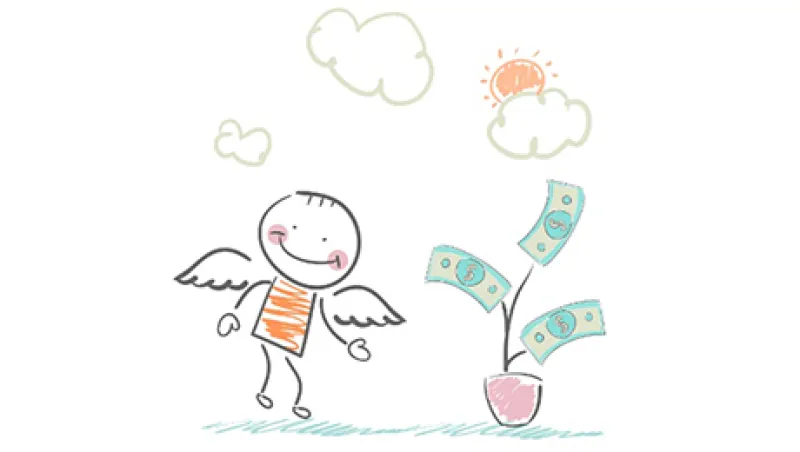European investors may be moaning because interest rates have fallen to rock-bottom levels, but for companies the trend has been a blessing. They can now fund themselves very cheaply through the public debt markets at a time when it’s difficult to borrow from banks, which have cut lending to meet tough regulatory standards.
The rush to take advantage is fast becoming a stampede. Global corporate issuance of euro-denominated debt reached $424 billion last year, according to Dealogic, more than double the post-credit-crunch low of $185 billion in 2011. Borrowing this year, as of April 2, has amounted to $144 billion, up 14 percent from the same period in 2014 and more than three quarters of 2011’s total.
Investors expect the onslaught to continue. “Corporate issuance is making up for the crisis in bank lending,” says Sandra Crowl, a member of the investment committee at Carmignac Gestion, a €53 billion ($56 billion) Paris-based investment manager. “It’s going to continue to grow because banks are still constrained from offering loans.”
Many also anticipate U.S. companies will keep adding to the total. “At the moment, this is a very favorable spot for U.S. issuers,” says David Page, London-based senior economist at France’s €623 billion AXA Investment Managers. “Not only can they issue debt cheaply, the value of their debt is falling as the euro falls against the dollar.” Recent U.S. issuers include iPhone maker Apple and Warren Buffett’s Berkshire Hathaway, with offerings of €2.8 billion last November and €3 billion this March, respectively.
Page’s view that strong U.S. issuance will persist is based largely on his forecast that, having plunged from a May 2014 peak of $1.40 to $1.08 as of April 1, the euro is likely to decline yet further. He thinks it will drop to 95 cents by 2016 before bottoming out. As a result, “we expect a steady stream of U.S. issuance over the course of this year but not necessarily in future years,” Page says.
Although coupons are low — Berkshire Hathaway’s recent issue ranged from 0.75 percent for eight-year paper to 1.625 percent for 20-year notes — investors can console themselves that corporate yields are at least positive, which is more than can be said of the latest Swiss government ten-year bond.
“Is this market attractive in an outright sense? Arguably not,” says Tom Ross, co-manager of the Henderson Credit Alpha Fund, a global long-short corporate bond fund, at £81 billion ($119 billion) Henderson Global Investors in London.
When government bond and cash rates are negative, a positive yield of even 80 basis points or 1 percent — the rough range of the Markit iBoxx EUR investment-grade index — is attractive to investors, Ross explains. “The main buyers are insurers, asset managers and wholesale and private wealth within Europe,” he says. “Investors tell us they’re buying it as an alternative to cash. That’s where the demand is coming from.”
Investment-grade corporate bonds can be considered almost as cash alternatives partly because defaults are so rare. LNG Capital, a London-based hedge fund firm specializing in European credit, calculates that even for single-B issuers — firmly in junk bond territory — default rates were far less than 1 percent in 2014. That’s well below the three-decade average of 5 percent and lower than the 12-year average of a little under 2 percent. “It’s very difficult for companies to go bust at the moment because they can borrow so cheaply,” says Gary Jenkins, chief credit strategist at $70 million LNG.
For investors unimpressed with the low rates offered by investment-grade bonds, single-B issuers might provide a solution. “Double-Bs already trade at relatively tight spreads to government bonds because they have been crowded out to a certain extent by the trickle-down effect from investment-grade,” says Henderson’s Ross. In search of returns, investors are gradually moving down the ratings ladder into high-yield debt, he notes.
In March double-B-rated ArcelorMittal, the Luxembourg-based steelmaker, issued a six-year bond at a yield of 3 percent. By contrast, six-year bonds offered by Wind Telecomunicazioni, a single-B Italian mobile operator, were yielding 5.4 percent in early April.
Henderson’s Credit Alpha Fund holds the Wind paper. Ross says his £805 million vehicle is free to take advantage of the fact that for regulatory reasons many pension funds and insurers find it tough to buy bonds rated below double-B. This stops single-B yields from being pushed down too far.
In a sign of how much the euro zone landscape has changed, investors think the main vulnerabilities of this market are problems of success rather than failure in the broader economy. The days when bond market yields rose sharply because of trouble in the euro zone periphery now seem long ago.
“Probably the biggest risk is some significant upside surprise to growth in the euro area,” Ross says. This could stoke fears that the €1.14 trillion quantitative easing program run by the European Central Bank will end earlier than its scheduled finish of September 2016. “The idea that maybe QE will stop at some point before then could push investors to move out of corporates and into cash,” Ross warns.
Get more on fixed income.






